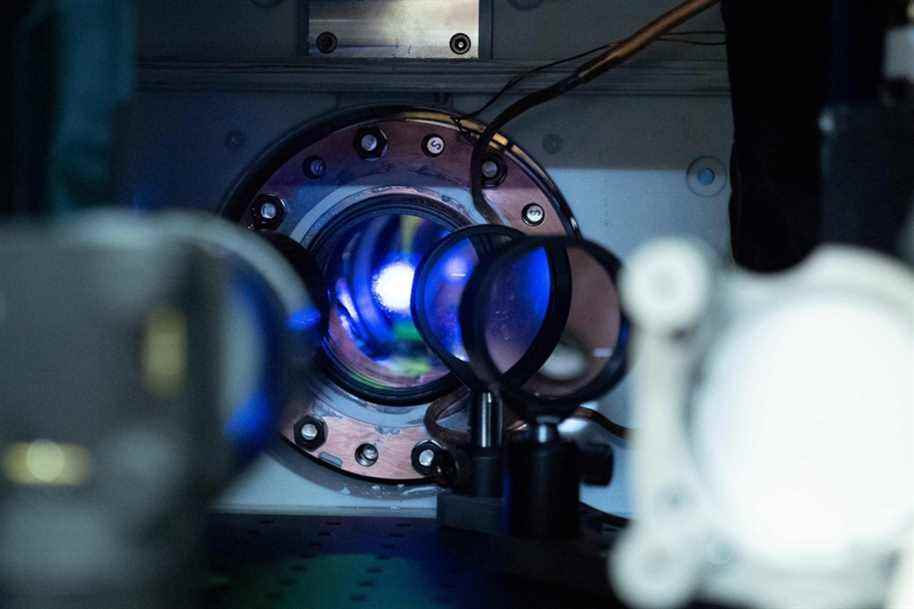(Washington) Scientists have succeeded in observing Einstein’s theory of general relativity on the smallest scale ever attempted, by demonstrating that the ticking of two clocks was very slightly off when they were separated from each other. only a fraction of a millimeter.
Posted at 2:52 p.m.
According to Jun Ye of the University of Boulder in Colorado, it is “by far” the most accurate clock ever developed. And it could pave the way for new discoveries in quantum mechanics, which governs the subatomic world.
The researcher and his colleagues published their results on Wednesday in the prestigious journal Naturedescribing the technical progress that enabled them to create an object 50 times more precise than their previous clock, which in 2010 already broke the precision record.
Einstein’s theory of general relativity, according to which the gravitational field of a very large object distorts space-time, dates from 1915. According to this theory, time slows down when one approaches a mass important.
But it could not be verified until much later thanks to the invention of atomic clocks, which measure time by detecting the passage of atoms to a higher energy state, when they are exposed to a particular frequency.
In 1976, an experiment involved sending a clock into space, which was shown to be one second faster every 73 years than its equivalent on Earth.
Since then, clocks have become more and more precise, and therefore better at detecting the effects of relativity.
A decade ago, Jun Ye’s team broke a record by observing a time difference when their clock was moved 33 centimeters up.
“Theory of Everything”
Jun Ye’s breakthrough was working with so-called “optical lattice” clocks, using lasers to trap atoms in specific ways. This technique prevents them from falling due to gravity or moving, which would cause a loss of accuracy.
Inside the new clock are 100,000 strontium atoms, immobilized in several layers, measuring a total of one millimeter high.
The clock is so precise that when this stack was split in half, scientists were able to detect time differences between the top and bottom half.
At this level of sensitivity, clocks act as probes.
“Time and space are connected,” Jun Ye said. “And with such precise time measurement, you can see how space is changing in real time – the Earth is a living, dynamic body. »
Such clocks could for example make it possible, in volcanic regions, to differentiate under the surface a solid rock from lava, and thus help to predict eruptions.
Or to study how global warming is melting glaciers and raising sea levels.
But what excites Jun Ye the most is the role these clocks could play in physics.
The current clock can detect a time difference over 200 micrometers – but by bringing that number down to 20, it could explore the quantum world, and help fill in some theoretical gaps.
If relativity explains beautifully how large objects such as planets or galaxies behave, it is incompatible with quantum mechanics, which deals with the very small.
The intersection of the two fields could make it possible to take a further step towards a “theory of everything” capable of explaining all the physical phenomena of the cosmos.
